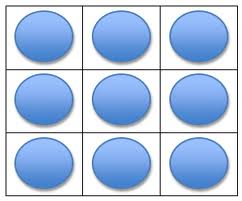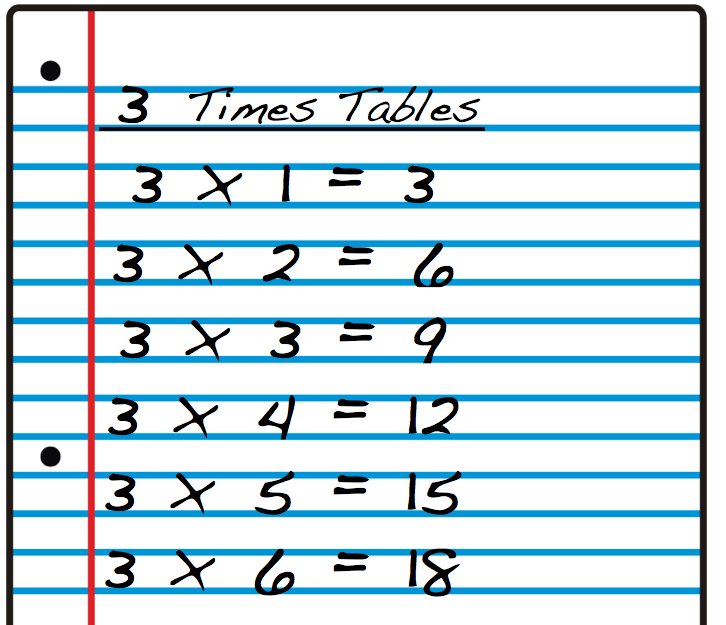When introducing a new math concept, begin by anchoring students' understanding in a concrete representation before progressing to a semi-concrete and then abstract representation of the concept.
concrete ---> semi-concrete --> abstract
For example, let's say you're teaching multiplication for the first time. Instead of beginning by showing students the times tables, you'll want to develop their understanding that multiplication is repeated addition. Start in the concrete stage:
concrete ---> semi-concrete --> abstract
For example, let's say you're teaching multiplication for the first time. Instead of beginning by showing students the times tables, you'll want to develop their understanding that multiplication is repeated addition. Start in the concrete stage:
| CONCRETE REPRESENTATION OF 3 x 3 Have students manipulate counters, buttons or other objects, creating an array. An array is simply an arrangement of objects into rows and columns. This array has 3 columns and 3 rows, illustrating the multiplication fact 3 x 3. Students can count the total number of counters to reach the answer "9." |
When students fully understand how to create arrays out of counters, move to the semi-concrete stage:
| SEMI-CONCRETE REPRESENTATION OF 3 X 3 In this stage, students are moving away from using concrete objects they can manipulate, such as counters. Instead, they represent these objects on paper by drawing the array using circles, tally marks, stars, etc. Here you can begin introducing more mathematical language ("We are multiplying three times three...") and show how the array is represented by the equation 3 x 3 = 9. |
Finally, after students demonstrate mastery drawing arrays, they're ready for the abstract stage:
| ABSTRACT REPRESENTATION OF 3 X 3 When your students can draw arrays to show their understanding of multiplication, it's time to take away that support. In the abstract stage, students are dealing solely with numbers. Numbers are abstract because they're merely squiggly lines that don't mean anything until they're attached to an amount. It's in this stage that students begin to memorize their times tables and record 3 x 3 as an equation ("3 x 3 = 9) without the use of counters or other manipulatives. |
The amount of time it takes your student or child to progress from one stage to the next varies. Some kid will take a few days, some may need a few weeks. The key is to give students the time to internalize the concept at each stage before moving into the next.
To summarize the progression when introducing a new math concept:
CONCRETE: using physical objects students can manipulate
SEMI-CONCRETE: making a drawing or other visual representation of the manipulatives without physically holding them
ABSTRACT: using solely numbers without the use of manipulatives or drawings to solve the problem
Consider how you might use this progression when teaching subtraction, adding fractions with like denominators, or comparing decimals to the tenths. How have you progressed from the concrete to the semi-concrete and then abstract with your own students?
To summarize the progression when introducing a new math concept:
CONCRETE: using physical objects students can manipulate
SEMI-CONCRETE: making a drawing or other visual representation of the manipulatives without physically holding them
ABSTRACT: using solely numbers without the use of manipulatives or drawings to solve the problem
Consider how you might use this progression when teaching subtraction, adding fractions with like denominators, or comparing decimals to the tenths. How have you progressed from the concrete to the semi-concrete and then abstract with your own students?



 RSS Feed
RSS Feed